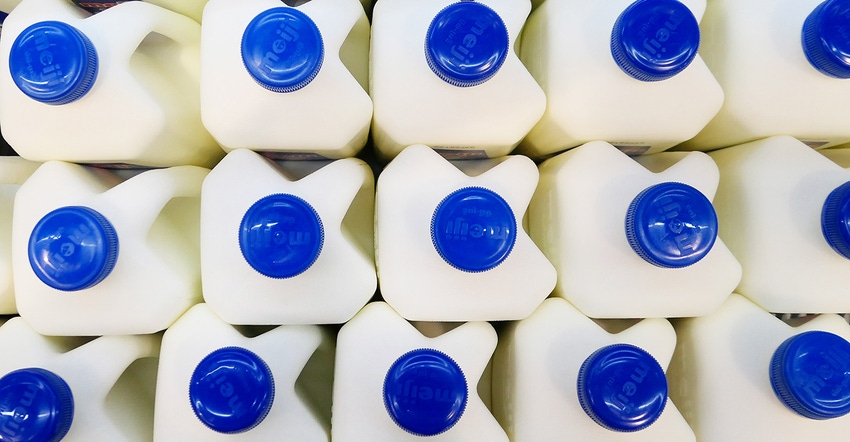Resin Price Report: $0.06/lb Price Hike Sought for High-Density PE
High-density polyethylene (PE), used to make milk jugs among numerous other products, is in tight supply because of force majeure declarations at three resin production plants.
March 22, 2023

Economic uncertainty fed by bank failures kept resin buyers on the sidelines last week. With the price of crude oil at its lowest level since December 2021, Prime polyethylene (PE) and polypropylene (PP) prices trended lower for the second consecutive week across the PlasticsExchange marketplace. The weaker prices were based more on waning sentiment and lack of demand than an overabundance of supply, noted the Chicago-based resin clearinghouse in its weekly Market Update.
Railcar offers remained relatively thin, and Prime was again seen for some select grades. Force majeures remain in place for PE and PP, but converters — many operating at reduced capacity — have not had any difficulty sourcing material. Export interest was also off as Asian traders lowered their bids and made competitive offers into Latin America. Undeterred by soft domestic demand, producers continue to push for March contract increases to preserve and expand margins, writes the PlasticsExchange.
Spot PE trading activity was quiet the week of March 13. The flow of offers remained light and was met with unenthusiastic demand. Most PE grades were down a penny, with the exception of high-molecular-weight (HMW) high-density (HD) PE Film, which shed $0.02/lb as availability began to improve. Low-density (LD) PE was the most active resin to trade last week, but still not overly exciting. HDPE interest was noticeably slower compared to the solid demand earlier in the month, when processors sought to supplement supply in the wake of resin production issues and ongoing force majeures, according to the PlasticsExchange.
A $0.03/lb increase is generally on the table for March PE contracts, with up to $0.06/lb being attempted for HDPE, which remains in tight supply because of force majeure declarations at three resin-producing plants. Spot market conditions and pricing do not support implementing the PE increase this month, but stranger things have happened. According to industry data released by the American Chemistry Council (ACC), producers scaled back reactor run rates in February well below capacity. Resin production was below January levels, but still above Q4, when a concerted effort sought to work down domestic inventories.
Domestic PE sales in February pulled back from higher January levels and tallied more than 200 million pounds below the trailing 12-month average. Exports were still strong at 4% above the 12-month average. All told, there was a small draw from producer PE stockpiles, which entered March about 900 million pounds below the July peak. For specific data figures, the PlasticsExchange encourages readers to subscribe directly to the ACC.
Spot PP trading slowed to a snail's pace, according to the PlasticsExchange report. Aside from some scattered transactions, inquiries reportedly were generally limited to price checking and discussions of the market’s tone. Both co- and homo-polymer PP peeled off $0.03/lb, as spot polymer-grade propylene (PGP) costs came down substantially from yearly highs, limiting the magnitude of the forthcoming price increase. There was little interest in off-grade railcars; the best demand was seen for Prime truckloads that processors bought to satisfy short-term needs. While some restocking is required, minimal quantities are moving, as buyers maintain a wait-and-see approach on a monomer/resin correction before returning to the market.
As resellers sell off their lower-cost resins into this PGP-led rally, their replacement costs are much higher and current demand does not really support the elevated price levels, notes the PlasticsExchange. Although PP producers reduced reactors rates back to around 70% of capacity, domestic sales in February also fell, totaling 100+ million pounds below the 12-month average. Exports were fine, but they generally account for less than 4% of total PP sales. Consequently, inventories had a second consecutive build and entered March just 75 million pounds below the September peak. There are nominations to expand PP margins by $0.06/lb. The PlasticsExchange believes, however, that the imminent cost-push increase based on the upcoming March PGP contract settlement is already a tough pill to swallow.
Read the full Market Update, including more news about PGP pricing and energy futures, on the PlasticsExchange website.
About the Author(s)
You May Also Like




